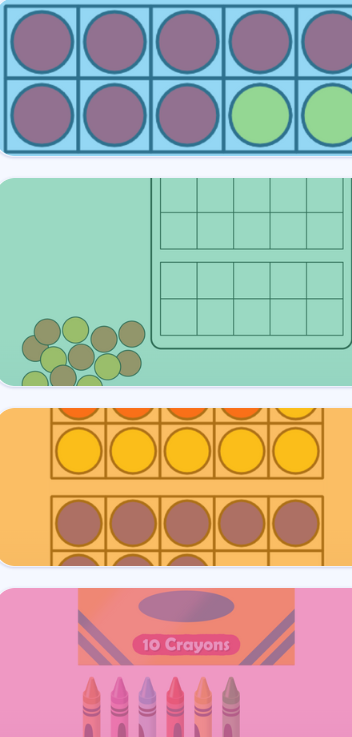
-
Unit 3 Narrative
In this unit, students develop an understanding of 10 ones as a unit called “a ten” and use the structure of 10+n10+𝑛 to add and subtract within 20.
In kindergarten, students composed and decomposed the numbers 11–19 into 10 ones and some more ones. In a previous unit, students solved story problems of all types with unknown values in all positions and numbers within 10. They used the relationship between addition and subtraction, drawings and equations, and various tools (10-frames, connecting cubes, two-color counters) to represent the quantities in the problems. They learned that the values represented by the numbers or expressions on each side of an equation are equal.
Here, students decompose and recompose addends to find the sum of two or three numbers. For example, to find the value of 9+69+6, they may decompose 6 into 1 and 5, compose the 1 and 9 into 10, and find 10+510+5.
Subtraction work occurs throughout the unit and becomes the focus in the last section. Students consider taking away and counting on as methods for subtracting. They understand subtraction as an unknown-addend problem and use their knowledge of addition to find the difference of two numbers.
For instance, students may reason about the value of 10−610−6 by:
Taking away 6 from 10

Counting on to 10, starting from 6

Using an addition fact, 6+4=106+4=10
Students solve story problems throughout the unit and learn two new problem types—Add To, Start Unknown and Take From, Change Unknown. Students compare the structure of different types of story problems as they practice adding and subtracting within 20.
Throughout the unit
Throughout the unit, warm-ups such as Number Talks and How Many Do You See reinforce students' seeing and using units of 10 when working with numbers within 20. Students are introduced to new centers that support the work of this unit. They may also revisit previously introduced centers as suggested in each section, or other familiar centers based on their need and interest.

